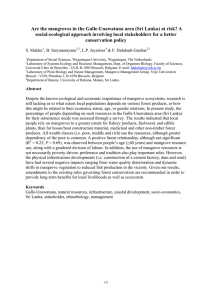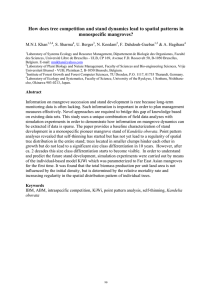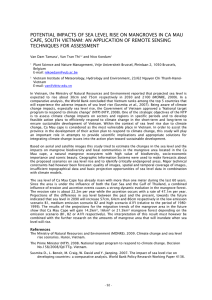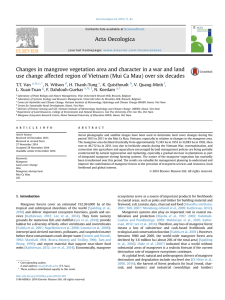Application of remote sensing and GIS for detection of long-term... shoreline changes in Ca Mau, Vietnam
advertisement
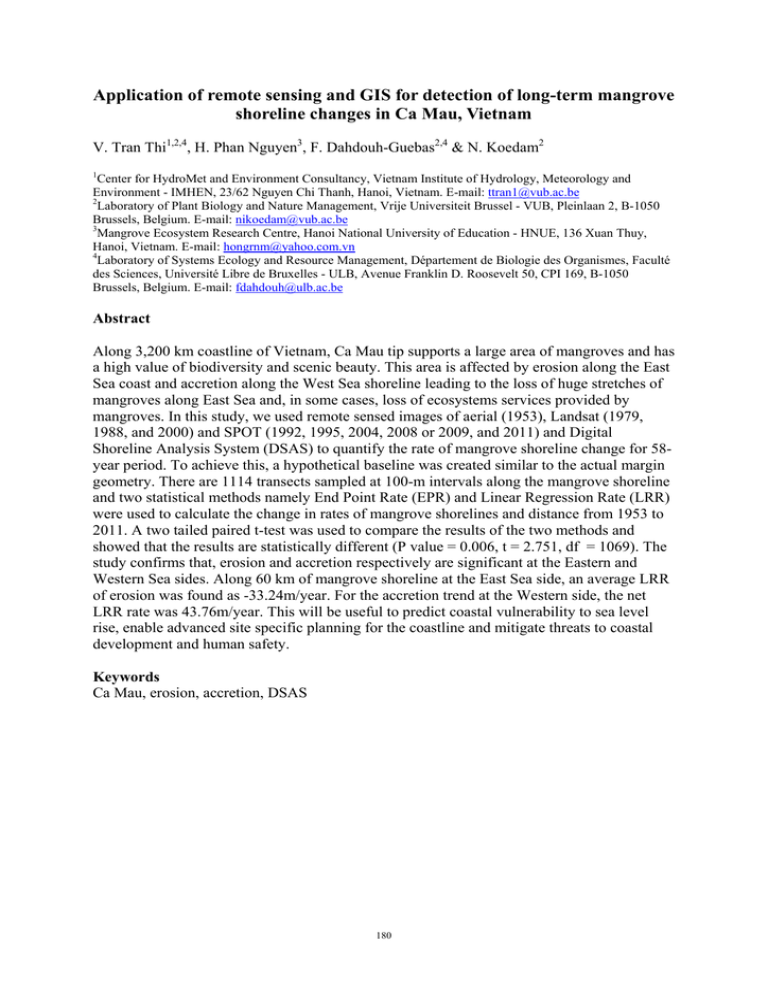
Application of remote sensing and GIS for detection of long-term mangrove shoreline changes in Ca Mau, Vietnam V. Tran Thi1,2,4, H. Phan Nguyen3, F. Dahdouh-Guebas2,4 & N. Koedam2 1 Center for HydroMet and Environment Consultancy, Vietnam Institute of Hydrology, Meteorology and Environment - IMHEN, 23/62 Nguyen Chi Thanh, Hanoi, Vietnam. E-mail: ttran1@vub.ac.be 2 Laboratory of Plant Biology and Nature Management, Vrije Universiteit Brussel - VUB, Pleinlaan 2, B-1050 Brussels, Belgium. E-mail: nikoedam@vub.ac.be 3 Mangrove Ecosystem Research Centre, Hanoi National University of Education - HNUE, 136 Xuan Thuy, Hanoi, Vietnam. E-mail: hongrnm@yahoo.com.vn 4 Laboratory of Systems Ecology and Resource Management, Département de Biologie des Organismes, Faculté des Sciences, Université Libre de Bruxelles - ULB, Avenue Franklin D. Roosevelt 50, CPI 169, B-1050 Brussels, Belgium. E-mail: fdahdouh@ulb.ac.be Abstract Along 3,200 km coastline of Vietnam, Ca Mau tip supports a large area of mangroves and has a high value of biodiversity and scenic beauty. This area is affected by erosion along the East Sea coast and accretion along the West Sea shoreline leading to the loss of huge stretches of mangroves along East Sea and, in some cases, loss of ecosystems services provided by mangroves. In this study, we used remote sensed images of aerial (1953), Landsat (1979, 1988, and 2000) and SPOT (1992, 1995, 2004, 2008 or 2009, and 2011) and Digital Shoreline Analysis System (DSAS) to quantify the rate of mangrove shoreline change for 58year period. To achieve this, a hypothetical baseline was created similar to the actual margin geometry. There are 1114 transects sampled at 100-m intervals along the mangrove shoreline and two statistical methods namely End Point Rate (EPR) and Linear Regression Rate (LRR) were used to calculate the change in rates of mangrove shorelines and distance from 1953 to 2011. A two tailed paired t-test was used to compare the results of the two methods and showed that the results are statistically different (P value = 0.006, t = 2.751, df = 1069). The study confirms that, erosion and accretion respectively are significant at the Eastern and Western Sea sides. Along 60 km of mangrove shoreline at the East Sea side, an average LRR of erosion was found as -33.24m/year. For the accretion trend at the Western side, the net LRR rate was 43.76m/year. This will be useful to predict coastal vulnerability to sea level rise, enable advanced site specific planning for the coastline and mitigate threats to coastal development and human safety. Keywords Ca Mau, erosion, accretion, DSAS 180
